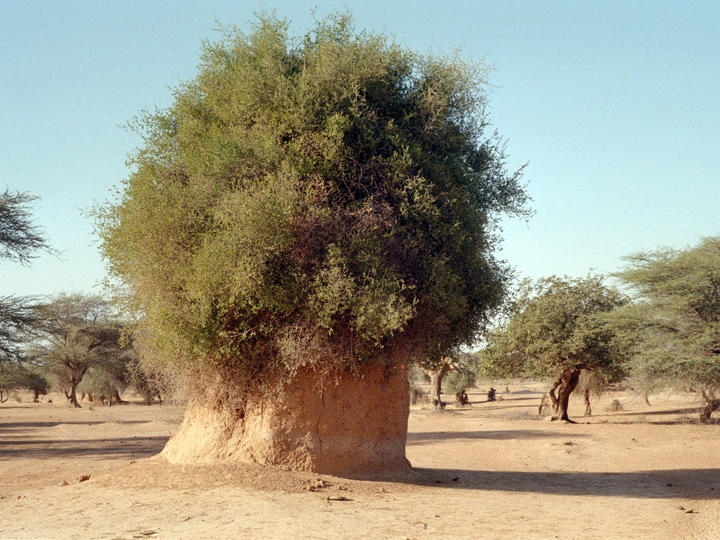Ecologies of the savanna: back then and right now

Ekaterina Golovko is a Russian-born researcher, writer and photographer living between Bologna, Italy and Dakar, Senegal and interested in contemporary African city, critical approaches to colonial history and heritage and their emanations in the present. Initially trained as a linguist, she received a PhD in Linguistics from Bologna University (2010). Adopting the sociolinguistic approach to language and particularly variationist sociolinguistics, she is interested in variation as an intrinsic phenomenon of the language system. Building on this theoretical ground, she has turned to photography, research on oral cultures, archives, and the “more than human,” always keeping in mind that variation and relationality are fundamental features of any structure.
Her practice is focused on writing and photography. She has published texts on ethnographic museums and alternative archives, on oral culture and epistemic violence in NKA Journal of Contemporary African Art, in The February Journal, written on commission for the Center for Experimental Museology, among others. Her photography has appeared in Fotofilmic JRNL 15 and NEA Magazine, among others. In 2022 she exhibited her photographic work during the Dak’art Biennale at the Hotel de Ville de Dakar. In 2024 Italian photo publisher Editrice Quinlan published her monographic publication ‘Dakar’ in the ‘20x24’ collection.
Part of the curriculum collective Archive for the Eleventh Hour (2019-2023) that devotes itself to the creation of counter- and para-historical compositions, threading archival materials and polyphonic narration, towards a collectivity that entangles the immaterial, spectral and sonic. As of recent (2021–22), they developed a workshop for Haus der Kulturen der Welt’s The Whole Life project, the outcome of which was presented during the exhibition The Whole Life. Archives and Imaginaries (2022); presented work at the Royal College of Art, and contributed an essay to Decolonial Hacker (online, 2021).
The project I am currently working on has a tentative title “Back then and right now” inspired by the work of the philosopher Denise Ferreira da Silva and in particular her concept of “fractal thinking.” It combines photography, writing, sound recordings and is located in the bush in the Fouta Toro region of northern Senegal but at the same time everywhere in the world. My main goal is to establish a methodology that draws concepts from the environment and connects to artwork by building a conceptual basis for thinking about space(s) with the natural world. In particular, I want to use the termite mound as a metaphor extended to a theoretical concept for reflection on more-than-human ecologies.
The project focuses on bush ecologies, trees and termite mounds, as sites of interconnection, interdependence, accumulation and intersection. Termite mounds, trees, shrubs and their modes of coexistence create mutable forms and constantly evolving relationships. The termite mounds are living monuments, temples, condominiums, and examples of conviviality. They are not separable from the beings that inhabit them, and they are examples of interdependent entities, where boundaries are blurred, layers overlap, drool over each other. Moreover, to a human observer, termite mounds look like fixed and static entities, whereas they are complex and dynamic processes.
Overcoming the division between visible and invisible, external and internal, animate and inanimate, we learn to see the complexity of being as its inherent characteristic. By linking these visual examples to the work of Edouard Glissant and his concept of opacity, it's possible to think about space with trees and termite mounds. I try to develop visual ideas for unstable, changing environments prioritizing their right to opacity. Focusing on these non-human creations, sites of more-than-human architecture, the project looks at the complex forms of inter-species cohabitation and more- than-human forms of solidarity.